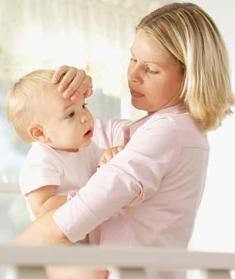The urinary tract is comprised of the bladder, urethra, ureters, and the kidneys and each one plays an important role in the body’s removal function of liquid waste. The kidneys will filter the blood, and produce urine while the ureters transport urine from kidneys to bladder for storage until its elimination via the urethra.
Cystitis is an infection which may occur anywhere along the urinary tract, albeit the bladder and the urethra are most often involved. Should this cystitis find its way to the kidneys through the ureters it becomes more serious as it becomes pyelonephritis, an inflammation of the pelvis and one or several chambers of the kidney known as the calyces.
Risk Factors for UTIs in Girls and Boys
 Bacteria do not commonly inhabit the urine but they are able to enter the urinary tract quite easily from skin surrounding the anus; the most frequent “visitor” to the urinary tract is the dreaded intestinal bacteria Escherichia coli or E. coli which is the most common cause of children’s UTI, although UTIs caused by bacteria are not considered contagious.
Bacteria do not commonly inhabit the urine but they are able to enter the urinary tract quite easily from skin surrounding the anus; the most frequent “visitor” to the urinary tract is the dreaded intestinal bacteria Escherichia coli or E. coli which is the most common cause of children’s UTI, although UTIs caused by bacteria are not considered contagious.
UTIs occur frequently in young girls more than in young boys because the female urethra is shorter and is much closer in proximity to the anus. UTIs in girls appear particularly in those around toilet training age. Boys who are younger than a year old and have not been circumcised are at a high risk for developing UTIs.
Other Factors to be Considered for Developing UTIs
- A family history of having UTIs.
- Poor hygiene and toilet habits.
- Abnormal reflux or backward flow of urine from bladder up to ureters and to kidneys; this may be present at birth and between 40% and 50% of babies have been found to have this condition known medically as vesicoureteral reflux or VUR.
- A urinary tract’s functional or structural abnormality such as a blockage along the urinary tract of regular urine flow or a kidney that is malformed.
- The use of soaps or bubble baths which can irritate the urethra.
Boys who have not been circumcised are also prone to develop UTIs. It is crucial to detect the presence of UTIs in children so as to treat them promptly. Untreated or undiagnosed UTIs often lead to permanent kidney damage in children who are younger than six years of age.
Symptoms of UTIs
- Abdominal pain.
- Burning sensation and pain when urinating.
- Frequent need for urination.
- Pain in the backside.
- Fever that is higher than 38°C or 100.4°F.
In children below two years of age, the symptoms may include:
- Vomiting.
- Irritability.
- Diarrhea.
- Lack or loss of appetite.
- No weight gain.
- Fever (which, as mentioned earlier, may often be the only visible symptom).
Tests for Detection of UTIs
A visit to the pediatrician should confirm whether or not the symptoms mentioned are those of a urinary tract infection or other medical conditions. The tests for detection of UTIs include:
- Urine testing: the child’s urine sample is sent to the laboratory for examination. Urine of children who have not been toilet trained just yet is taken from the bladder by insertion of a catheter.
- Imaging test: an ultrasound is an imagining test to show whether or not the child’s urinary system developed properly before birth. If this system is found to be abnormal, the likelihood of the child acquiring a UTI is high.
- Kidney ultrasound: this testing is done in children who are aged less than three to five. This test involves the application of a gel to the child’s skin in the abdomen and back and a device similar to a wand which is pressed against the child’s body.
- VCUG: abnormalities missed by the ultrasound are detected by the more detailed voiding cystourethrogram or VCUG. This is actually an x-ray of the child’s urethra and bladder which shows if VUR is the culprit.
Treatments for UTIs
Antibiotics are the first line of treatment for a UTI. The pediatrician will know which antibiotic is best for a child’s UTI. The most suitable antibiotic will depend on the age of the child, the kind of bacteria which caused the infection and the strength of resistance that the particular bacteria are known to have.
Children who are two months and older would usually be given an antibiotic by mouth but if the child is unable to take oral medication or is vomiting, he or she should be brought to the hospital to be treated with antibiotics intravenously (IV). For acute cystitis in children, the use and dosage are determined by the doctor.
The Use and Dosage of Cipro
Complicated cases of UTI, acute pyelonephritis deemed uncomplicated, and kidney infections as a result of complicated UTIs, the antibiotic dosage is determined by the child’s pediatrician. Medication such as Cipro, the brand name of generic ciprofloxacin, may be prescribed by the pediatrician in chewable tablet or liquid form.
Cipro belongs to the quinolone, short for fluoroquinolone, class of drugs that works by killing several types of infection-causing bacteria. Available as liquid suspension taken orally, tablet, eye ointment, IV solution, and ear drops, Cipro is available only on prescription. Cipro is effective for treatment of not only UTIs but of other infections in adults as well.
Share This